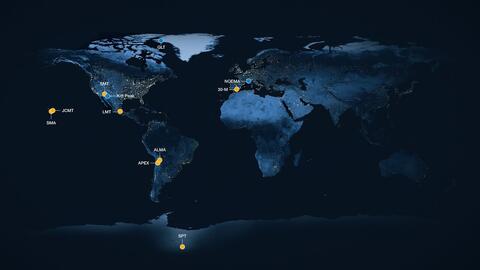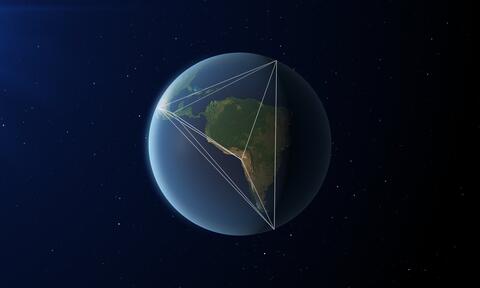First Image of the Black Hole at the Heart of Our Galaxy
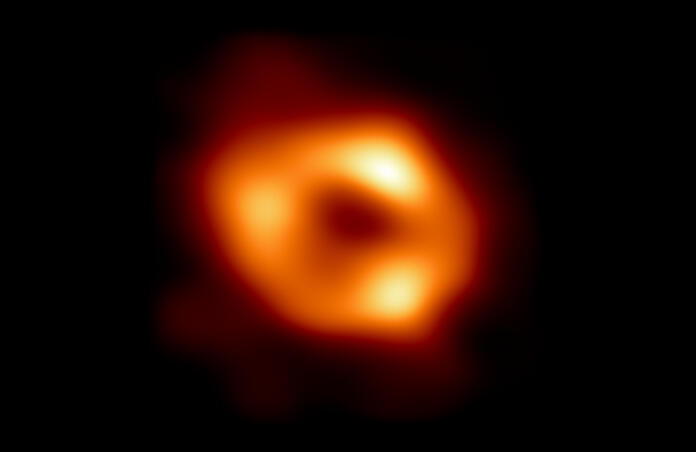
I attended the ESO-hosted EHT 2022 event for you !
You might remember the Event Horizon Telescope (EHT) collaboration for their remarkable achievement two years ago: the first image of a black hole, in galaxy M87. Today, during multiple simultaneous press conferences around the world, they unveiled an even more incredible image: that of the black hole at the centre of our own galaxy the Milky Way.
From their observations of the stars at the centre of the Milky Way and their orbits, astronomers have been confident for decades that there must be a very compact object there, baptised Sagittarius A* (Sgr A*) and with a mass roughly 4 million times that of the Sun. Exotic theories like boson stars have been proposed to explain the phenomenon, however with this new, direct EHT image of the centre of our galaxy, we have a very strong piece of evidence for this compact object being a supermassive black hole. Furthermore, this provides validation for Einstein’s theory of General Relativity which predicts the existence of these black holes.
Combining 8 radio telescopes around the world into one via Very-Long Baseline Interferometry, the EHT team effectively created a virtual “super-telescope” the size of the Earth. It took the researchers 25 years to develop this technique, which provides an instrument 3 million times more sensitive than the human eye, and with a resolution such that it could image a donut on the surface of the Moon !
This is necessary if we want to detect Sgr A*, which despite being sizeable (it would just about fit into Mercury’s orbit) is also 27 000 light-years away from Earth, hidden behind clouds of gas and dust that obscure our view of the galactic centre. After hours of observations in 2017, it was time for billions of hours of data analysis conducted with supercomputers (or “correlators”) like Raven at the Max Planck Institute for Radio Astronomy and Frontera at the Texas Advanced Computing Centre, which enabled the combining of the thousands of images into the one we are presented with today.
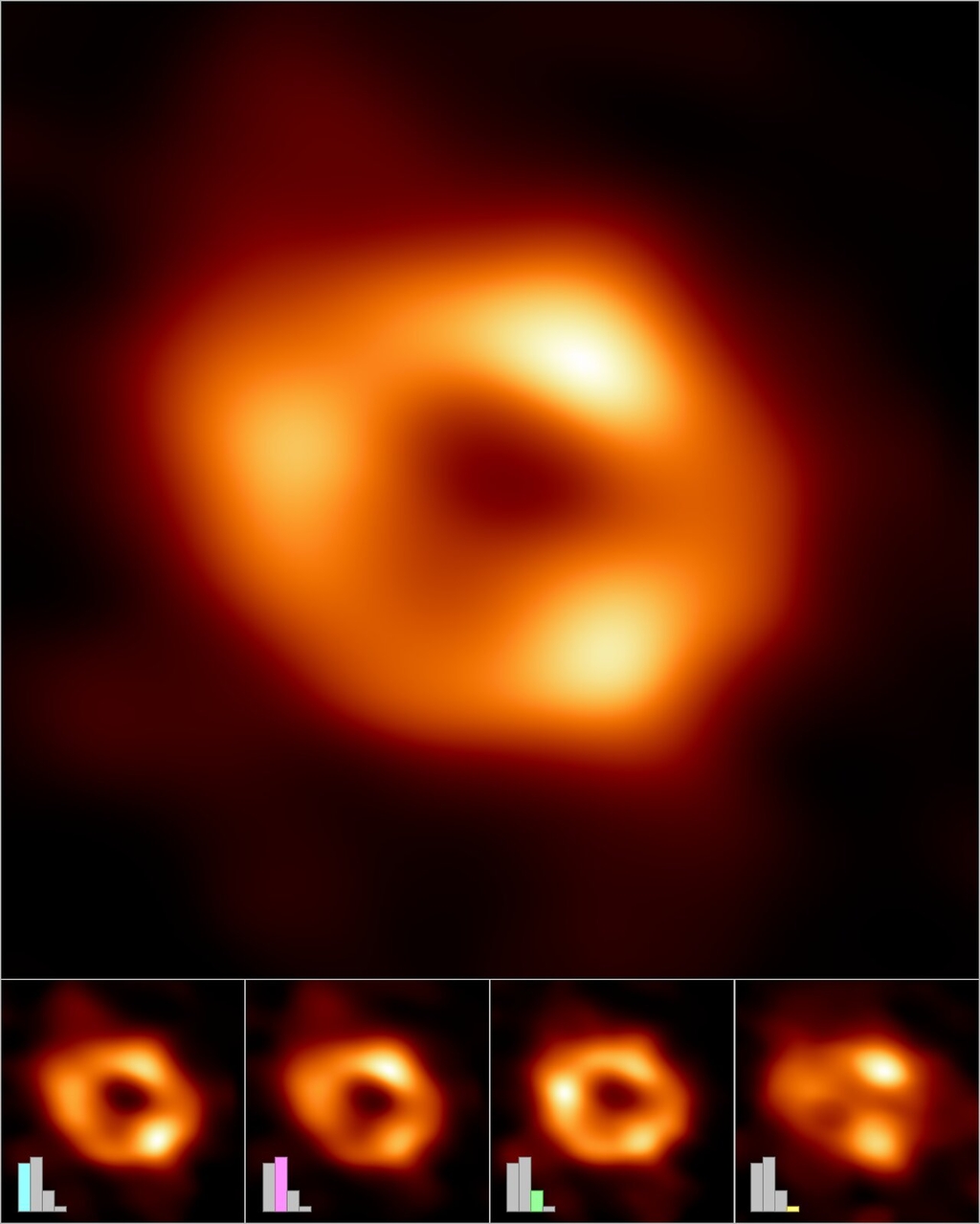
How does this image compare with M87’s black hole, then ? Well, firstly, all the members of EHT present at the conference and the subsequent Q&A highlight that we are looking at our own, home galaxy, which gives us a sense of awe in and of itself. Beyond that, there is the awe at the technological achievement: Sgr A* is 1000 times less massive than M87; to go back to donut imagery, if Sgr A is out donut, M87* would be the size of the Allianz Arena in Munich !
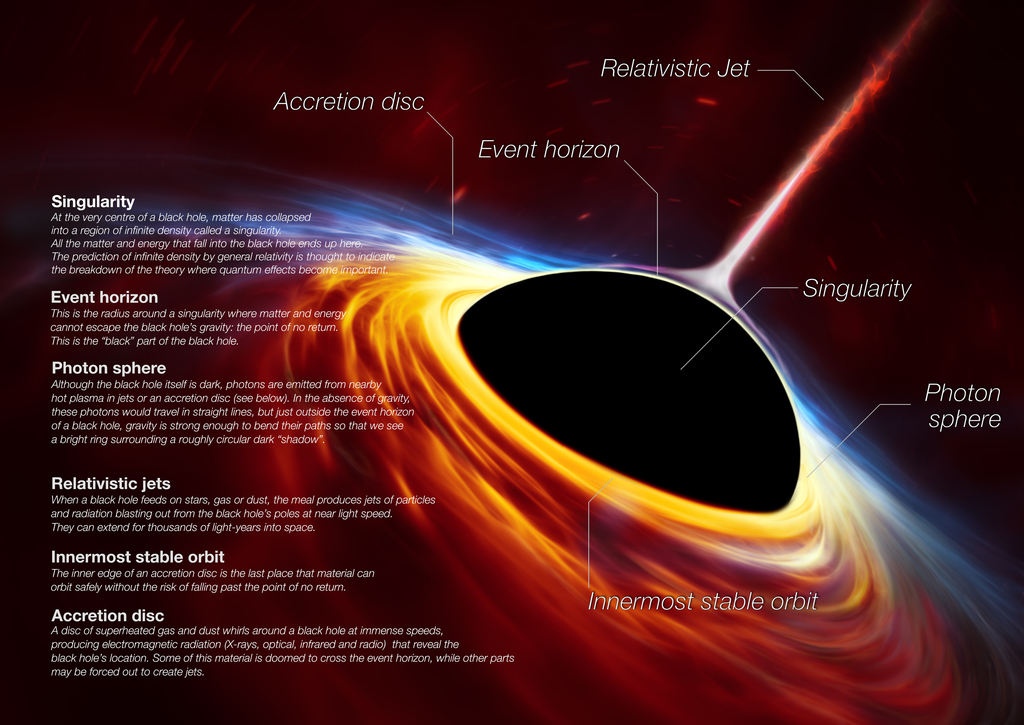
Extensive modelling of black holes and the gas and magnetic fields surrounding them was also a key part of the process, as this enabled the researchers to comment on properties like Sgr A’s rotation rate and the angle at which we see it. The most likely it that we are seeing it with its spin axis pointing towards us. Note that the orientation of the supermassive black hole doesn’t have much of an influence on the current rotation rate of the galaxy as a whole and direction, however it’s extremely significant to understand its past evolution – a collision with another galaxy, for instance, might have shifted the axis. What this could mean, though, is that if Sgr A emits jets as can be observed with other supermassive black holes, it would be even trickier to spot them due to our position. There is evidence for past jets in what are known as Fermi bubbles, but direct detection of jets is one of the issues that the EHT collaboration hopes to tackle next.
In terms of similarities, though, considering that M87* evolves in a giant elliptical galaxy and has a much higher accretion rate, i.e., is located in a very different environment than Sgr A, it is incredible to see how both are so consistent with the theory of General Relativity. More images, notably of Active Galactic Nuclei, are yet to be revealed by the EHT collaboration, and with the addition of 3 new telescopes to the network since the Sgr A images were taken, even higher resolutions are to be expected. The field of black hole astronomy is just getting started …
All image and video credit to EHT/ESO

